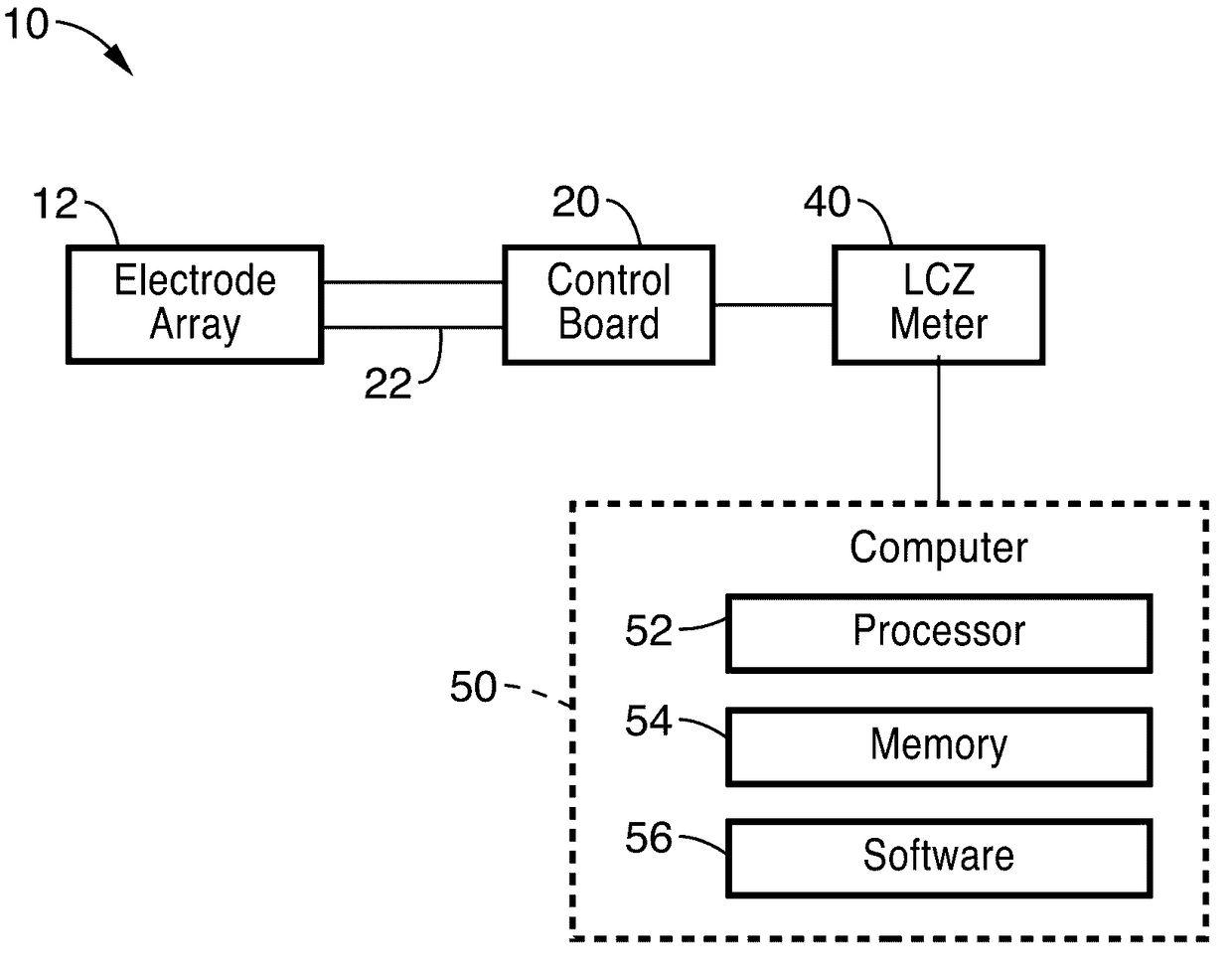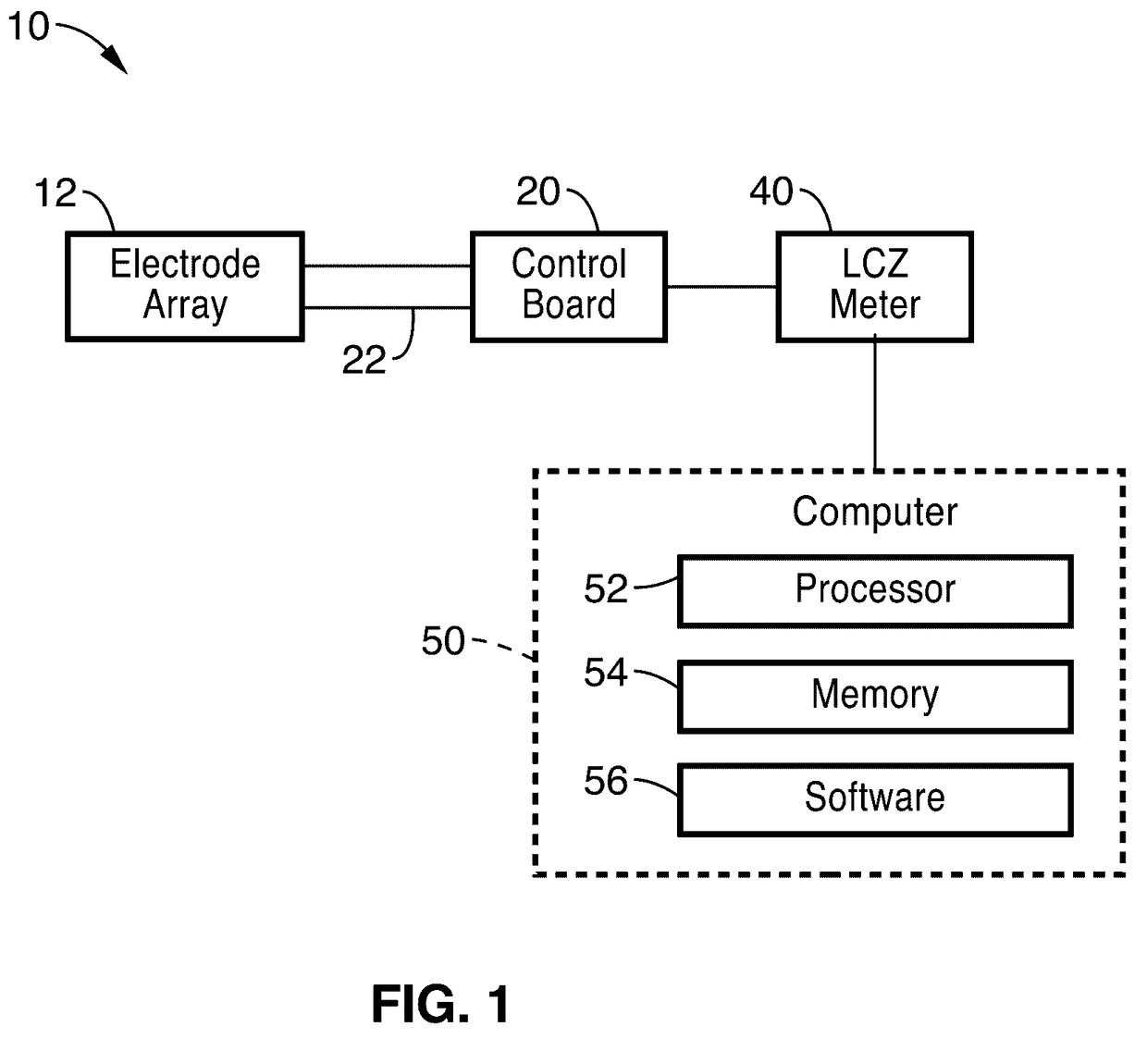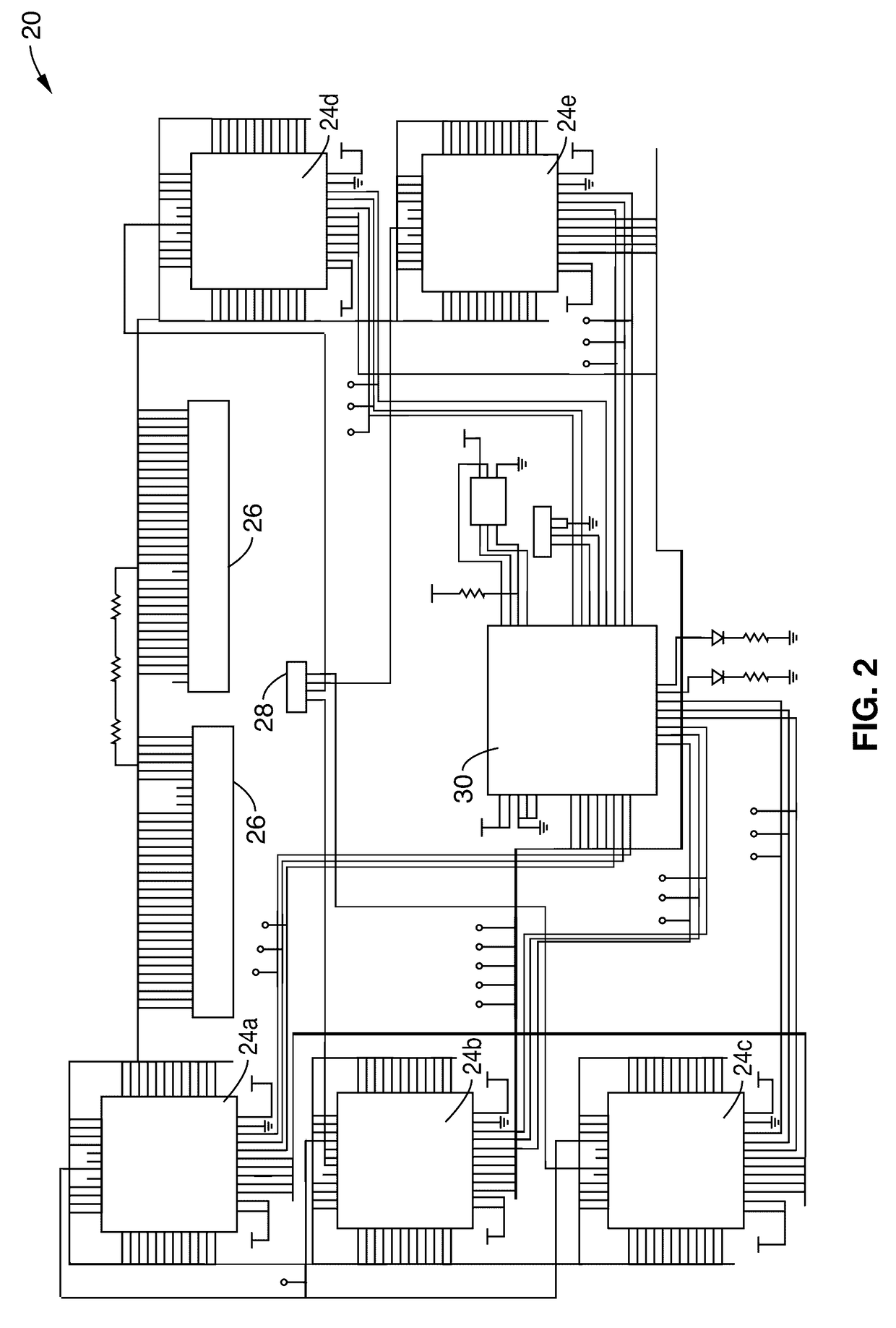Methods and apparatus for monitoring wound healing using impedance spectroscopy
a technology of impedance spectroscopy and wound healing, applied in the field of wound monitoring, can solve the problems of ulcer formation, skin breakage and ulcer formation in hospitalized patients, and patients with diabetes or obesity are particularly at risk, so as to prevent the formation of pressure ulcers, save patients time and money, and monitor wounds. the effect of the wound
- Summary
- Abstract
- Description
- Claims
- Application Information
AI Technical Summary
Benefits of technology
Problems solved by technology
Method used
Image
Examples
example 1
[0068]FIG. 9A through FIG. 18C illustrate a first experiment to verify the efficacy and function of the systems and methods detailed above.
[0069]To visualize the impedance magnitude and phase data collected, a map 100 resembling the electrode array is created and shown in FIG. 9B. FIG. 9A illustrates an electrode array 12 according to an embodiment of the technology disclosed herein overlaid on a photo of the wound area 86 and example impedance map 100. In FIG. 9A, black dots mark the locations of all the sense electrodes 14 of array 12. Since measurements are taken between each pair of nearest neighboring electrodes 14, the space between each pair of electrodes can be filled in with a color that corresponds to the impedance magnitude or phase as determined by an intuitive color scale. Since the impedance over healthy skin is much higher than that of wounded skin, coloring the map 100 as shown in FIG. 9B according to impedance magnitude creates a visually intuitive look at the wound...
example 2
[0078]FIG. 19 through FIG. 24B illustrate a second experiment to verify the efficacy and function of the systems and methods detailed above. Rats were sedated and the dorsal body hair was shaved and depilated with Nair to provide bare skin for impedance measurements. After the area was cleaned, the skin was gently tented up and placed between two disc-shaped magnets to create pressure ulcers. The animals returned to normal activity with the magnets in place for 1 hour or 3 hours, at which point they were sedated and the magnets were removed. Eleven of the 12 animals used in this study received the 1 hour treatment, and nine of the 12 animals received the 3 hour treatment.
[0079]Using fluorescence angiography to image real-time blood flow in the tissue, it was observed that relieving the pressure initially resulted in increased perfusion (reactive hyperaemia) as the blood returned to the affected tissue. When blood returns to the ischaemic tissue, it produces reactive oxygen species a...
PUM
 Login to View More
Login to View More Abstract
Description
Claims
Application Information
 Login to View More
Login to View More - R&D
- Intellectual Property
- Life Sciences
- Materials
- Tech Scout
- Unparalleled Data Quality
- Higher Quality Content
- 60% Fewer Hallucinations
Browse by: Latest US Patents, China's latest patents, Technical Efficacy Thesaurus, Application Domain, Technology Topic, Popular Technical Reports.
© 2025 PatSnap. All rights reserved.Legal|Privacy policy|Modern Slavery Act Transparency Statement|Sitemap|About US| Contact US: help@patsnap.com



